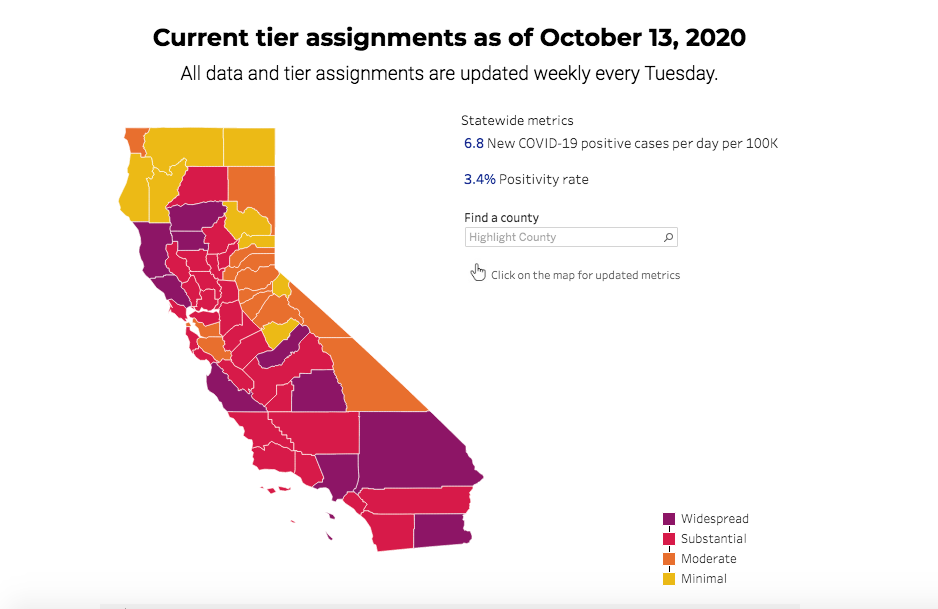Santa Clara and Alameda counties advanced to a less-restrictive tier of the state’s coronavirus pandemic reopening system Tuesday, enabling both counties to expand the maximum capacity of activities like indoor dining and open bars outside.
The two counties moved from Tier 2, the red tier, to Tier 3, the orange tier, by reducing their rate of new cases per 100,000 residents per day below four. They join San Francisco as the only Bay Area counties in Tier 3.
Santa Clara and Alameda counties also had to reduce their respective test positivity rates under 5 percent and their health equity score, which the state introduced last week, under 5.2 percent.
Santa Clara County Public Health Officer Dr. Sara Cody encouraged residents to continue the efforts they’ve taken in recent weeks to reduce the virus’ local spread. “We ask that everyone continue their efforts to prevent COVID-19 from spreading in our county,” Cody said. “Everyone must take responsibility for preventing spread so that we don’t move back to more restrictive tiers under the State’s structure.”
Santa Clara County had been in Tier 2 since Sept. 8, allowing the county to resume indoor operations at businesses like gyms, shopping malls, museums, restaurants, zoos and aquariums at limited capacities.
Alameda County had been in the red tier since Sept. 22 and had to wait a minimum of three weeks to move into a less restrictive tier, regardless of whether it met the thresholds for the orange tier for two consecutive weeks before then.
“We’ve chosen an approach that we describe as slow and stringent,” said Dr. Mark Ghaly, the state’s Health and Human Services secretary.”We wait for the data to come in, we try to understand how changes in the levels of mixing that’s allowable in communities actually translates into transmission before we do more,” Ghaly said.
In many cases, both counties will be able to expand the maximum capacity of indoor businesses from 25 percent to 50 percent or 200 people, whichever is fewer. Gyms, fitness centers, and hotels will also be allowed to reopen indoor pools, while gyms themselves can increase their capacity from 10 percent to 25 percent of their maximum occupancy.
Moving into the orange tier also allows multiple sectors like offices, cardrooms, bowling alleys, climbing walls and gyms, wineries and bars, breweries and distilleries at which food is not served to resume operating inside with caps on capacity.
Alameda County Interim Health Officer Dr. Nicholas Moss echoed Cody’s warning that local progress in fighting the coronavirus can be easily undone. “Especially with flu season coming, if we see spikes in COVID-19 cases and a rise in hospitalizations, we will take action to limit the spread and protect public health including resuming restrictions if needed,” Moss said in a statement.
Santa Clara and Alameda counties will now need to remain in the orange tier for at least three weeks before they would be allowed to move into the state’s least restrictive tier, which includes resuming indoor operations for businesses like bars, arcades and ice- and roller-skating facilities.
